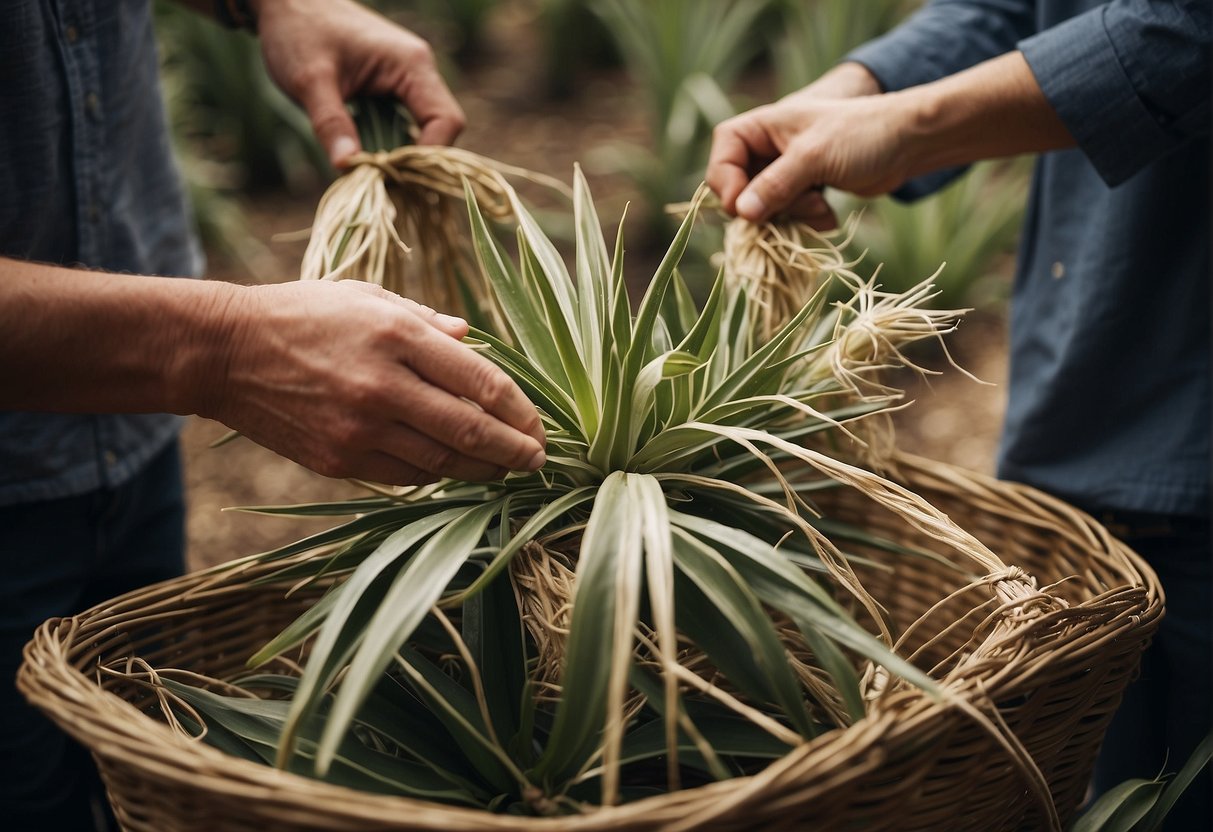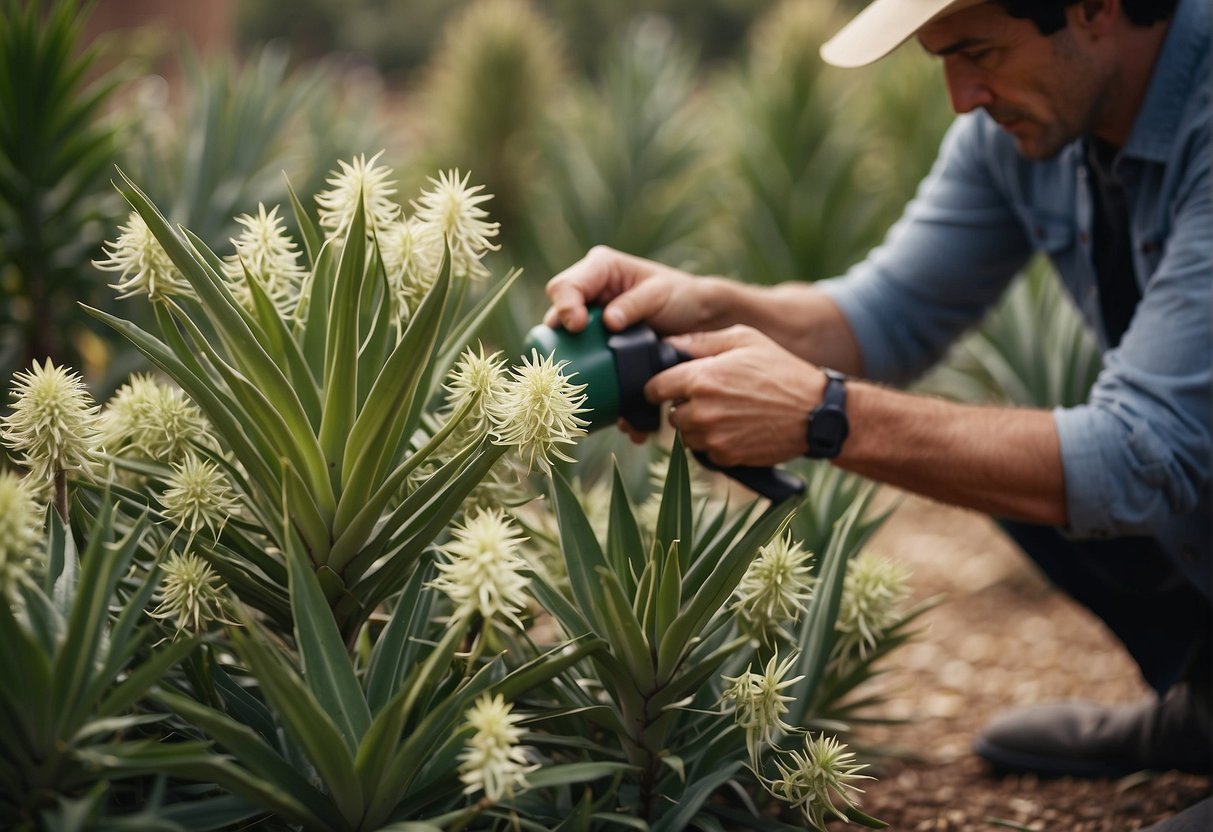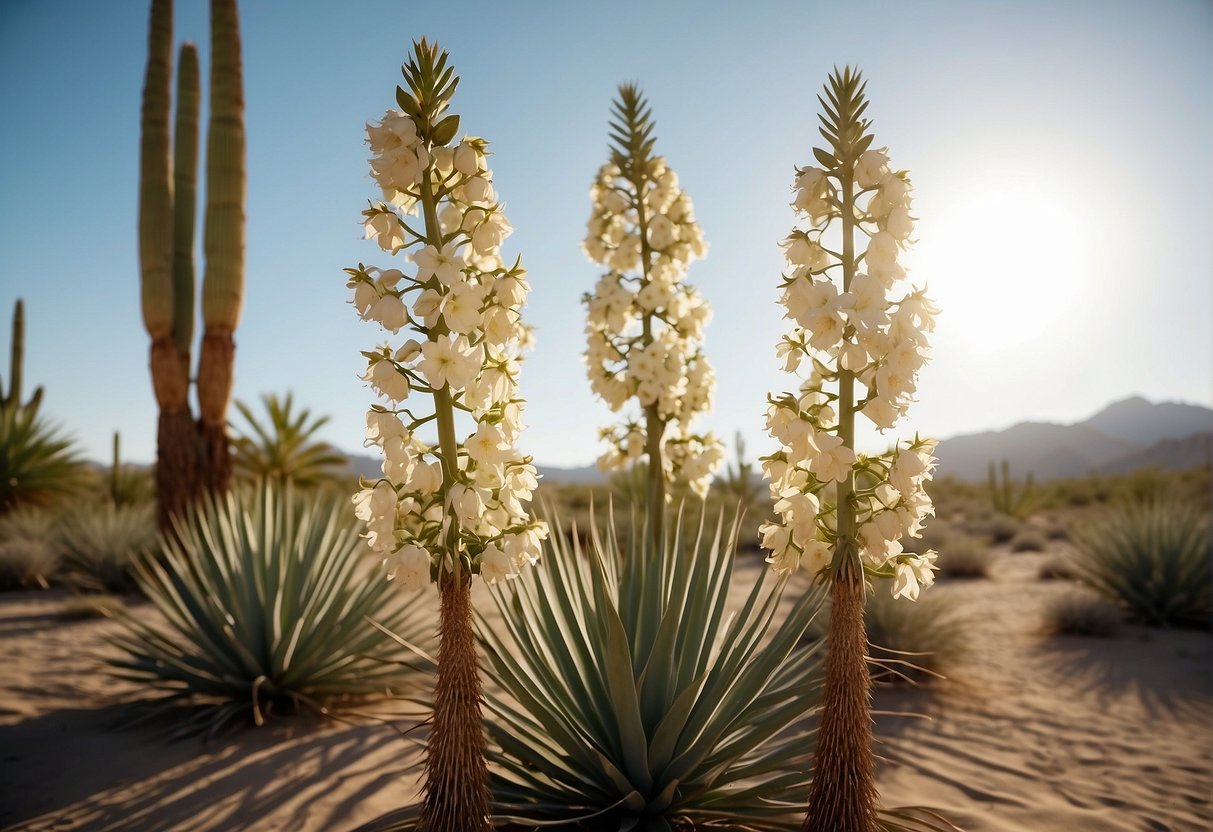What Can Yucca Plants Be Used For: A Comprehensive Guide
Yucca plants frequently populate dry areas and while they are often admired for their beauty, their utility spans much more than decorative appeal. Human use of yucca plants dates back centuries, encompassing both ornamental and practical roles. This article delves into the myriad applications of yucca plants and addresses common queries surrounding them.

Cultivation and care of yucca plants will also be briefly discussed to provide a better understanding of how to propagate and maintain these plants. Whether you’re a seasoned gardener or someone looking for a low-maintenance plant to add to your home, this article will provide valuable insights into the world of yucca plants. So let’s dive in and discover the many uses of these versatile plants.
Key Takeaways
- Yucca plants have a wide range of uses beyond just being ornamental plants.
- Proper cultivation and care are important for maintaining healthy yucca plants.
- Yucca plants can be used for both decorative and practical purposes, making them a valuable addition to any garden or home.
Cultivation and Care

Planting and Sunlight Requirements
Yucca plants are hardy and can tolerate a range of temperatures, but they prefer warm and dry climates. They grow best in full sun, so choose a location that receives at least 6 hours of direct sunlight per day. Yuccas are typically planted in early spring in well-drained soil. Make sure the soil has good drainage to prevent root rot.
Watering and Fertilizing
Yuccas are drought-tolerant and do not require frequent watering. Water your yucca plant deeply once a week during the growing season. Avoid overwatering, as this can lead to root rot. Fertilize your yucca plant once a year in early spring with a balanced fertilizer.
Pruning and Maintenance
Yuccas are low maintenance plants and do not require frequent pruning. However, you can remove dead or damaged leaves to keep your yucca looking neat. Use sharp pruning shears to make clean cuts.
Propagation Techniques
Yuccas can be propagated from seeds or cuttings. To propagate from seeds, collect ripe seeds from the plant and sow them in well-drained soil. To propagate from cuttings, cut a stem from the plant and let it dry for a few days. Then, plant the cutting in well-drained soil and water it lightly.
Pests and Disease Management
Yuccas are generally pest and disease resistant, but they can be affected by root rot if overwatered. To prevent root rot, make sure the soil has good drainage and avoid overwatering. If you notice signs of rot, such as yellowing leaves or a foul odor, remove the affected plant parts and adjust your watering schedule.
Ornamental Uses

Yucca plants are not only versatile in their uses but also add an aesthetic appeal to any space. They come in different varieties, colors, and textures, making them perfect for ornamental purposes. Here are some popular ornamental uses of yucca plants:
Landscape Design
Yucca plants are ideal for landscaping purposes due to their remarkable structure, texture, and green foliage. They provide a unique and exotic look to any landscape design, making them a popular choice for many gardeners. They can be planted in groups or as a solitary plant to create a focal point in your garden.
Indoor Decoration
Yucca plants are also ideal for indoor decoration. They are low maintenance, making them perfect for those who want to add some greenery to their home without much hassle. The spiky leaves and rosette shape of the plant add a modern and contemporary look to any indoor space.
Varieties and Their Features
There are several varieties of yucca plants, each with its unique features. The spineless yucca, for example, is a popular variety for indoor decoration due to its lack of spines. Yucca aloifolia, also known as Spanish bayonet, has sword-shaped leaves and is ideal for landscaping purposes. Yucca gloriosa, also known as Spanish dagger, has green leaves with a blue tint and produces white flowers. Yucca brevifolia, also known as Joshua tree, is a slow-growing variety that can reach up to 40 feet tall. Yucca rostrata, also known as beaked yucca, has blue-green leaves and is ideal for landscaping purposes.
In conclusion, yucca plants are not only versatile in their uses but also add an aesthetic appeal to any space. They are perfect for landscaping, indoor decoration, and come in different varieties, colors, and textures, making them a popular choice for many gardeners. With proper care and maintenance, yucca plants can thrive and add a unique touch to your home or garden.
Utilitarian Applications
Yucca plants have been used for a variety of utilitarian purposes for centuries. In this section, we will explore some of the most common applications of yucca plants.
Edible Parts and Nutrition
Yucca roots are a common source of food in many cultures. The roots can be eaten raw or cooked and are often used in stews, soups, and other dishes. Yucca roots are rich in carbohydrates, fiber, and vitamins, making them a nutritious addition to any diet.
In addition to the roots, yucca fruits are also edible. The fruits are often roasted and eaten as a snack or used in desserts. They are a good source of vitamin C and potassium.
Medicinal and Health Benefits
Yucca plants contain saponins, which have been found to have a variety of health benefits. Saponins have been shown to reduce inflammation, lower cholesterol levels, and boost the immune system.
Yucca supplements are often used to treat joint pain and arthritis. The supplements are believed to reduce inflammation and pain in the joints, making them a popular alternative to traditional pain medications.
Other Uses
Yucca plants have a variety of other uses beyond food and medicine. The roots of the banana yucca plant can be used to make baskets, while the seeds can be ground into a flour for baking.
Yucca plants are also commonly used in soaps and shampoos. The saponins in the plants create a natural lather, making them an effective and environmentally-friendly alternative to synthetic soaps and shampoos.
In conclusion, yucca plants have a wide range of utilitarian applications, from food and medicine to soap and basket-making. Whether you are looking to improve your health or reduce your environmental impact, yucca plants are a versatile and valuable resource.
Frequently Asked Questions
What are the medicinal uses of yucca flowers?
Yucca flowers have been traditionally used for their medicinal properties. They are believed to have anti-inflammatory and antispasmodic effects, which can help with conditions such as arthritis, colic, and digestive issues. The flowers can also be used topically to help with skin irritations and wounds.
How can yucca leaves be utilized?
Yucca leaves can be used for a variety of purposes. They contain saponins, which are natural detergents that can be used for cleaning. Yucca leaves can also be used to make baskets, mats, and other woven items. Additionally, the leaves can be used for medicinal purposes, such as treating skin conditions and respiratory issues.
What are the benefits of having a yucca plant in the home?
Yucca plants are known for their air-purifying properties. They can help remove pollutants such as formaldehyde, benzene, and trichloroethylene from the air. Yucca plants are also low-maintenance and can add a decorative touch to any home.
Can yucca plants be used for hair care?
Yucca plants contain natural saponins, which can be used as a natural shampoo. The roots of the yucca plant can be mashed and mixed with water to create a lather that can be used to cleanse the hair. Yucca can also help with dandruff and other scalp conditions.
What are the potential side effects of consuming yucca?
Consuming yucca in large quantities can cause stomach upset and diarrhea. Yucca can also interact with certain medications, so it is important to speak with a healthcare provider before using yucca as a supplement or medication.
How did Native Americans traditionally use yucca plants?
Native Americans have been using yucca plants for thousands of years. They used the leaves to make baskets, mats, and other woven items. They also used the plant for medicinal purposes, such as treating arthritis, skin conditions, and digestive issues. Additionally, Native Americans used yucca as a food source, consuming the flowers, fruits, and seeds of the plant.


